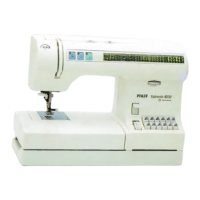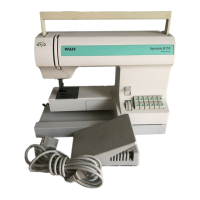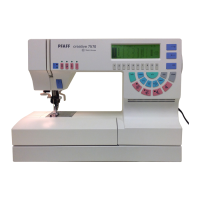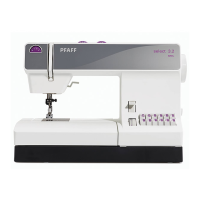Borders
with
a
combination
of
stitches
By combining different embroidery keys
as
desi
red
you can easily achieve other
embroi-
dered effects. This
is
a simple and pleasing
way
to
embelli
sh
tablecloths and garments.
-
Apply iron-on backing
or
place silk backing
paper under
the
fabric.
- Mark
the
center
with
tailor's chalk.
- You can
now
begin
with
the
combination
MIG
Stretch
, stitch
width
5
~.
Embroider
along
the
marked line. Then turn
the
fabric
and embroider back down the border
in
reverse.
- Then
sew
close
to
the
first
border
with
the
combination
L/K
Stretch,
stitch
width
5
mm~.
- IIF
Stretch,
stitch
width
5 mm
~,
comple-
tes
the
border. Embroider one
row
. Then
turn
the
material and embroider back down
the border
in
reverse.
< !
,---
1
,
i
~
Combinations
with
colored
thread
An additional effect can
be
produced
with
dif
-
ferent
colored thread.
Multicolored
thread was
used
for
the middle border in
this
example.
You
can purchase it in a great
variety
of
sha-
des from your
PFAFF
dealer.
-
Apply
iron-
on
backing or place
silk
backing
paper under
the
fabric.
-
Mark
the middle wi
th
tailor's chalk.
- You can
now
begin wi
th
the
combination
H
Stretch,
stitch
width
5
~
.
Embroider
along the marked line. Then
turn
the
fabric
and embroider back
down
the
border
in
reverse.
- Then sew close
to
the
first
borde
r
with
the
combination MIG
Stretch,
stitch
width
2 - 4 mm.
-
FIG
Stretch,
stitch
width
3 - 4
mm
,
com
-
plet
es
the border.
63
